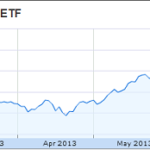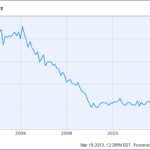Lenders will always be in the money-making business. It’s the nature of the territory. If you’ve ever been curious as to how all that lending equals mega investments, read on.
Most lenders are actually brokers who make their money by acting as the “middle man.” Mortgage lenders, however, dole out money from their own funds.
Other lenders may actually borrow money from larger financial institutions to lend out to their customers, or they use depositor’s funds.
Lenders rarely make money on keeping a loan for the full term. Even if you pay off your loan ahead of time, they’re not really hit with any inconvenience.
The bulk of their earnings comes from volume. This means that the more loan applications they bring in, the more loan completion fees they can charge.
The fees for one loan go beyond the completion fee. There is the loan origination fee, the processing fee, the underwriting fee, the application fee and even something called a loan lock fee. All of the money from these fees goes directly to the institution lending you the money.
Certain fees, such as the loan origination fee, will go directly to bank employees such as the loan officer. Most of them, however, are “junk fees” that exist purely for profit.
Generally, it’s a good bet that lenders will remarket your loan. You may have found that one of your loans has been going from lender to lender. This is because lenders make money by selling and reselling your loan, time and time again.
They also make money with what’s called the yield spread premium (YSP). The YSP is the difference between the amounts of interest you are charged and what the lender pays in interest when they replace that money.
For example, a bank’s lending rate may actually be 3 percent, but they offer loans at a rate of 5 percent. The bank is making that extra 2 percent on your loan.
When you go through closing on a mortgage, ask for an itemized list of the closing costs and look for an amount that should be listed as “amount financed.” If the amount financed isn’t the same as the principal, ask the loan officer about it. This is the point at which many institutions slip in unnoticeable fees, meaning that you’ll be responsible for paying the interest on those charges.
Never take a loan’s APR at face value. Some lenders include application fees in their annual percentage rates, so even if two financial institutions offer different APRs, they may actually have the same rates overall.
Since APR policies vary from lender to lender, it’s a good idea to find out more to make a comparison of the services.
When making mortgage payments, watch any extra payments you send in. Amounts over the monthly minimum often go into an escrow account. They’ll simply sit there and never be credited toward the principal.
Lenders have been known to put extra payments in a special savings account and forget about them. They do, after all, make money on interest, so keeping these extra payments from going to principal will earn them more money in the long run.
No matter what type of loan you have, keep on top of it. Request specific information and itemized lists and make sure extra payments are going to principal.











{ 0 comments… add one now }